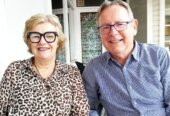
Water
A new report into water services says the greater Waikato will be better off if councils work together – and it will prompt discussions over setting up joint entities.
The document, commissioned by the Waikato Mayoral Forum, was released on Tuesday and suggests working together could lead to savings of almost $340 million over 10 years.

Tap water. Photo: Steve Johnson, pexels.com
Mayors from Hamilton city, Waikato, Waipā, Ōtorohanga, Waitomo, Taupō, South Waikato, Matamata Piako, Hauraki and Thames-Coromandel districts make up the forum.
They will now discuss with their councils whether they will take non-binding steps towards forming a joint entity to deliver functions like capital works planning and delivery.
It could lead to the formation of a multi-council regulated water services entity.
The report notes multiple independent reports over more than a decade show water infrastructure would be cheaper if councils joined together and leveraged scale.
In June Local Government Minister Simeon Brown confirmed the government was looking for a joined-up approach to three waters delivery, including in the Waikato.
Matamata Piako District Council chief executive Don McLeod, who led the workstream for 10 council chief executives, said each council would now need to consider what the findings mean for their communities and the wider region.
He said over time all ratepayers would be better off if councils worked more closely together, rather than continue to go it alone.
“Councils are between a rock and a hard place. Our ratepayers simply cannot afford to pay for the water infrastructure we need to build, yet we must build it. And we are required by law to meet increasing levels of compliance which is only going to get more expensive.
The current system is fundamentally broken – our contractors, our staff, the water experts, the ratepayers… are all telling us that. Something must change.”
Over the next 10 years, Waikato councils have budgeted nearly $5 billion for drinking water, stormwater and wastewater for capital works. All up, including operating costs, water services will cost more than $7.5 billion. The report says working together could see savings of $338 million over a decade. Most savings come from combining capital planning works and delivery.
The report also points to increasingly unaffordable water charges under the status quo, saying by 2035 average household water charges could range from $1652 a year in Ōtorohanga to $7921 in the Waikato district.
The report says council waters staff and contractors were under pressure given the ageing workforce, competition from other employers and an environment of ongoing uncertainty. The contracting industry had warned it did not have the staff to build necessary infrastructure.
The report also noted councils could not make a firm commitment on the final form of any potential regional waters entity until there is more clarity from the government.

Water. Photo: Pixabay








